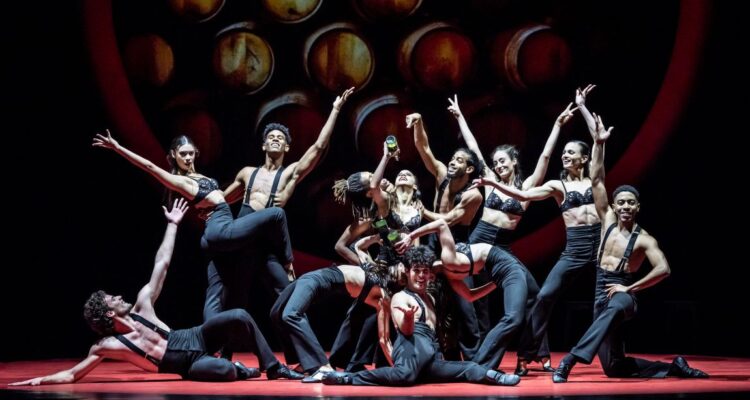This full-length show has its origins in a single act version that Carlos Acosta devised as part of his retirement from the Royal Ballet in 2015, and which he always regarded an unfinished business. It now returns in a two-act version, but in an unusual combination with the first act a brief but intense account of the development of Carmen’s relationship with Don Jose, and the second a more complicated and varied affair in which the unravelling of that relationship is coupled with her taking up with the bullfighter, Escamillo, while also broadening out the action to include many scenes of group action for the company. These are in many ways the highlights of the evening, both for the intensity and variety of the dances deployed, and the sheer dramatic thrill of their conception.
Acosta himself frames the action as a horned bull, a figure of destiny, both spectator and puppet-master of the plot. At the outset he presides over a tableau that anticipates the finale, and in a crucial moment in the second act he and Laura Rodriguez, as Carmen, enact a very physical ‘pas de deux’ in which she appears to wrestle with Fate literally. Otherwise the narrative plays out pretty much as happens in Bizet’s opera, though several of the supporting roles are elided along the way.
For the most part it is a thrilling evening, with many emotional and technical highlights. The quality of the dancing and the choreography are superb. Acosta seems to be channelling the aesthetic of Kenneth Macmillan, with a wonderfully fluid blend of the brutal and the tender, but always kept within a sense of classical form. Rhythmically, though, he explores territory of this own, as there are plenty of composers in play other than Bizet for the soundtrack. In essence he uses the regular adaptation for ballet arranged by Shchedrin, but its familiarity is dispelled by the addition of modern Cuban composers, which creates opportunities to add flamenco and other modern dance inflections. The dancers are expert in shifting through the many gears involved from one complex scene to another, while never losing a sense of overall form and structure.
The group scenes have an energy and unrestrained flair and passion that regularly astonished the audience into sustained applause, and I was particularly taken with the opening ‘bodega’ scene of Act II which brought us immediately back into the necessary zone of concentration. The three principals were all outstanding in their roles with Rodriguez above all embodying Carmen’s passion and desire for indpendence in every scene. She hardly gets a rest either, so it is a feat of stamina as well as of thoughtful interpretation and integrated dance technique. However, this very success of characterisation does create something of an unavoidable problem. Because – rightly – Carmen is seen as always her own woman, the sequences with both Alejandro Silva and Enrique Coralles lack a finally convincing element of passionate completion, commitment and fulfilment. In this sense what works dramatically in the opera fails to transfer to the world of dance where connection is so much a central part of the physical journey and dynamic aesthetic. This was why the encounter between Rodriguez and Acosta, the figure of fate, was the exception that proved the rule.
The supporting elements of the production are in safe and impressive hands. Lighting, video effects and set all combine to provide crackle and sizzle at key moments to enhance what we are seeing on stage. The recorded soundtrack was over-amplified at times to the point of distortion, but this is only a minor cavil. All-in-all this was a memorable and most rewarding evening, fully justifying Acosta’s vision and determination on following through on the enlargement of his original version. Hopefully, it will return again soon for a longer run so that a larger audience may appreciate its fine qualities.
Artistic Director: Carlos Acosta
Performers include: Carlos Acosta, Enrique Coralles, Laura Rodriguez, Alejandro Silva
Until 6 July 2024
1 hr 40 mins, with interval
Photo Credit: Johan Persson

